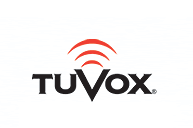
The chilly global financial climate has caused corporate spending to come to a stop, especially when it comes to capital spending. While many executives pay lip service to the importance of optimizing customer care experieince, investment in contact center, speech processing and IVR infrastructure has suffered along with all the other candidates for IT and Telecom investment. That’s why there’s so much interest in “cloud computing”, Software as a Service, and managed services arrangements.
These arrangements have traditionally allowed companies to invest in applications on a controlled basis – such as minutes of use or ports in service. More recently, thanks largely to efforts by Tuvox and a small cohort of application development and management specialists, enterprises are being offered speech solutions in a way that more closely matches spending to business benefit.
Tuvox calls its offer the Tuvox Accelerated ROI Program which, appropriately for these times, carries the acronym TARP. No enterprise is saddled with “toxic assets” because it obviates the need for capital investment in the hardware and software to run speech applications. The impact is to minimize the upfront costs associated with upgrading speech applications. However, this is only the beginning of Tuvox’s value proposition. The rest of the value proposition involves Tuvox’s tactic to minimize expenses by accelerating the time it takes to deploy new applications and services.
Following an engagement model that Steve Pollock, Tuvox’s co-founder, characterizes as a “partnership that can morph into a pay-for-performance arrangement,” Tuvox aims to cajole the companies that are contemplating speech to move from evaluation to implementation. The companies contract with each other to monitor the factors that have the greatest impact on profitability and to tune the applications in ways that have direct impact on the bottom line. Based on its experience with multiple applications and many customers, Tuvox has confidence that it can monitor performance variables and bring both the operational metrics and financial results in line with mutually expected values.
Categories: Articles

 NiCE Interactions 2025: Agentic AI, Better Data, and a Whole Lot of Partnership
NiCE Interactions 2025: Agentic AI, Better Data, and a Whole Lot of Partnership  Getting It Right: What AI Agents Actually Mean for Customer Support (Webinar)
Getting It Right: What AI Agents Actually Mean for Customer Support (Webinar)  Beyond the Basics: How AI Is Transforming B2B Sales at TP
Beyond the Basics: How AI Is Transforming B2B Sales at TP  Five9 Launches Agentic CX: Toward AI Agents That Reason and Act
Five9 Launches Agentic CX: Toward AI Agents That Reason and Act